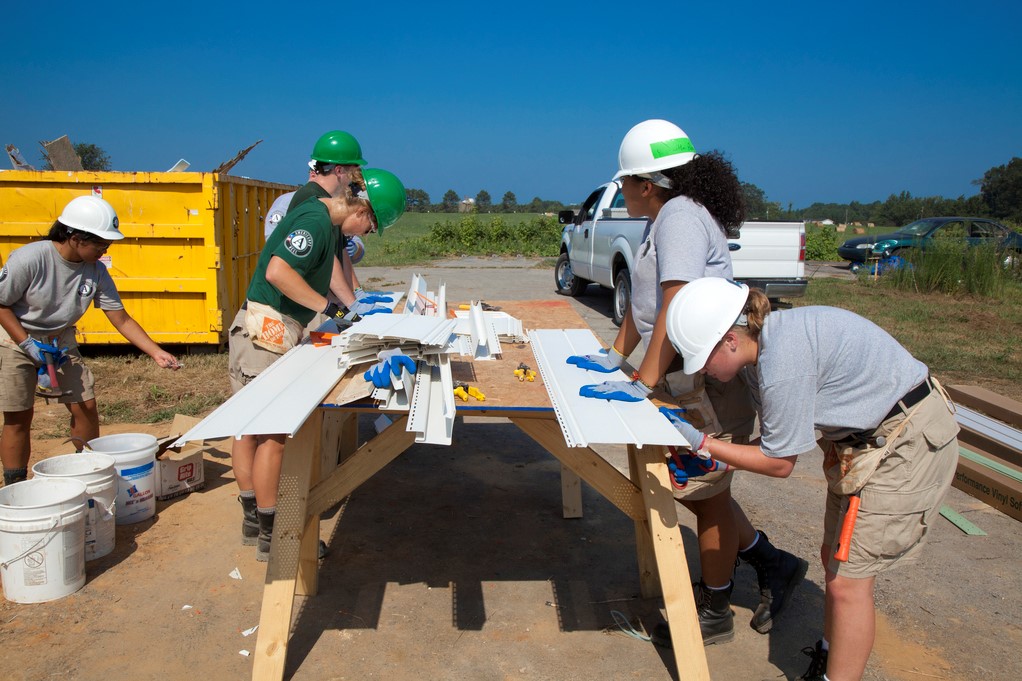

Extreme-heat events occur when temperatures are substantially higher than average for a particular location at a given time of year. The impacts of extreme heat can cause widespread suffering and fatalities: there were more than 7,400 heat-related deaths in the United States between 1999 and 2010. Climate change is leading to rising global average temperatures, as well as increases in the frequency of extreme-heat events.
The U.S. Global Change Research Program recently released The Impacts of Climate Change on Human Health in the United States: A Scientific Assessment. This report stated that by the end of the century, we can expect a decrease in premature cold-related deaths in the winter but an increase of thousands to tens of thousands of premature heat-related deaths each summer, based on present-day sensitivity.
Fortunately, the majority of heat-related deaths and illnesses are preventable. If we take actions to prepare for and respond to extreme-heat events, we can dramatically reduce the risks associated with extreme heat—especially for the most vulnerable populations, including the elderly and very young, people with certain health conditions, people like farmers or construction workers who work outside, and people in low-income households.
That’s why the Federal Government is aggressively working to help State, regional, tribal, and local communities prepare for potential extreme-heat events this summer. In particular, America’s PrepareAthon!—the Administration’s seasonal campaign to build community-level preparedness action—has designated the week of May 23–27 as Extreme Heat Week. During this week, Federal departments and agencies will take a number of actions to raise public awareness and prepare the nation for extreme heat. You can learn more about these efforts at https://www.ready.gov/heat.
To inform community-preparedness efforts, today, the National Integrated Heat Health Information System (NIHHIS), led by the National Oceanic and Atmospheric Administration and the Centers for Disease Control and Prevention, is launching a new interagency portal at http://climate.gov/NIHHIS. The NIHHIS portal integrates heat-health information, case studies, and tools from across the Federal Government to support on-the-ground efforts to reduce heat-related impacts on human health.
As part of Extreme Heat Week, on Thursday, May 26, from 2:00 – 3:30 PM EDT, the White House will hold a webinar featuring a panel of experts speaking about the growing risks of extreme heat and strategies that can be taken to reduce health impacts, with a focus on protecting vulnerable populations. The webinar will be geared towards community planners, public-health officials, coaches, caregivers, emergency responders, and others responsible for community preparedness for extreme heat. To register for the webinar, click here.
Rising global average temperatures and temperature extremes are serious problems. But by working collaboratively to enhance preparedness and response, together, we can beat the heat.
Additional Resources on Extreme Heat
- Extreme Heat and Your Health: http://www.cdc.gov/extremeheat/
- Excessive Heat Events Guidebook: http://www.epa.gov/heat-islands/excessive-heat-events-guidebook
- National Weather Service Heat Alerts: http://www.nws.noaa.gov/os/heat/ww.shtml
- The Impacts of Climate Change on Human Health in the United States: A Scientific Assessment: https://health2016.globalchange.gov/
- Occupational Safety and Health Administration’s Heat Safety Tool: https://www.osha.gov/SLTC/heatillness/heat_index/heat_app.html
- Low Income Energy Assistance Program: http://www.acf.hhs.gov/programs/ocs/programs/liheap
Tamara Dickinson is Principal Assistant Director for Environment and Energy at the White House Office of Science and Technology Policy
Alice Hill is Special Assistant to the President and Senior Director for Resilience Policy at the National Security Council


